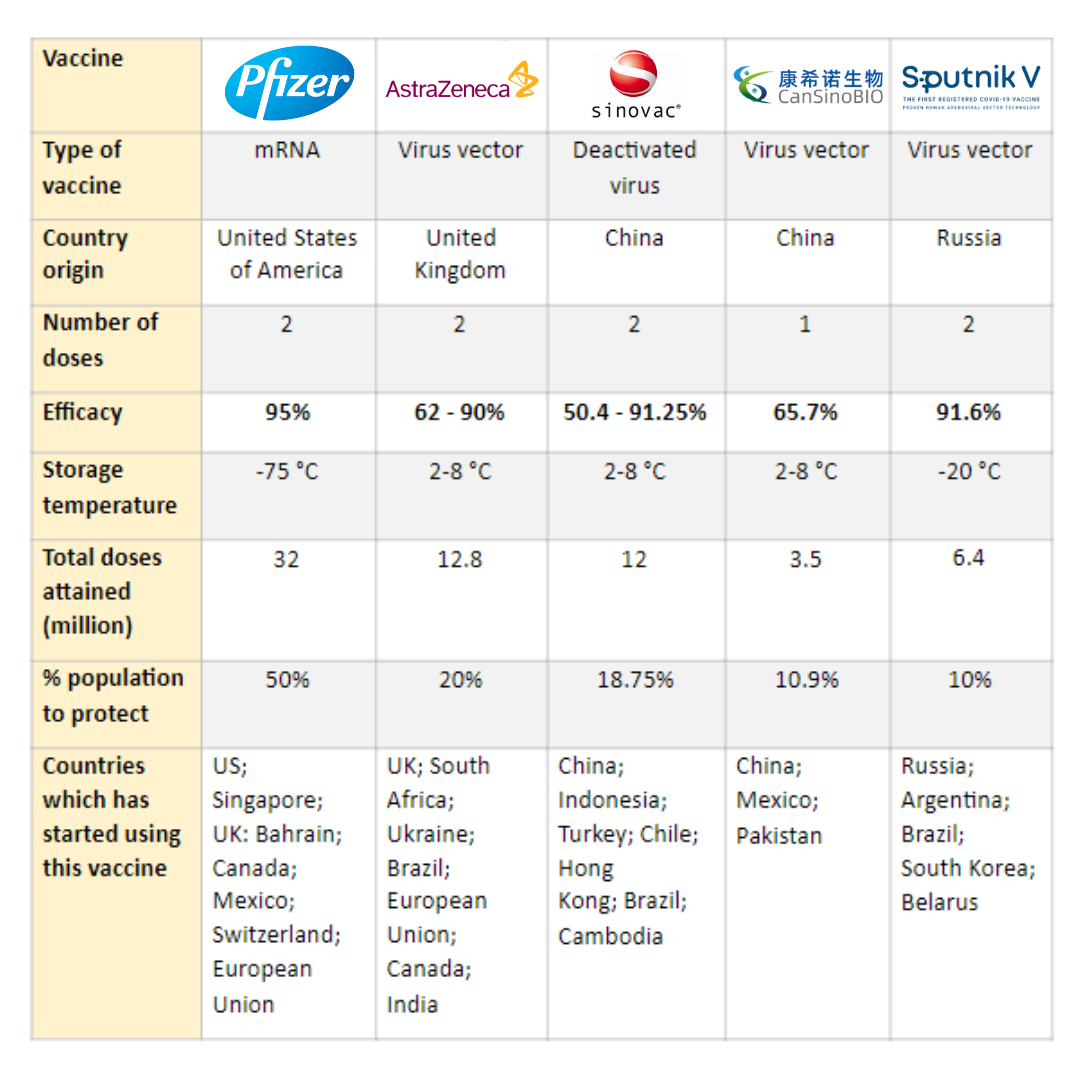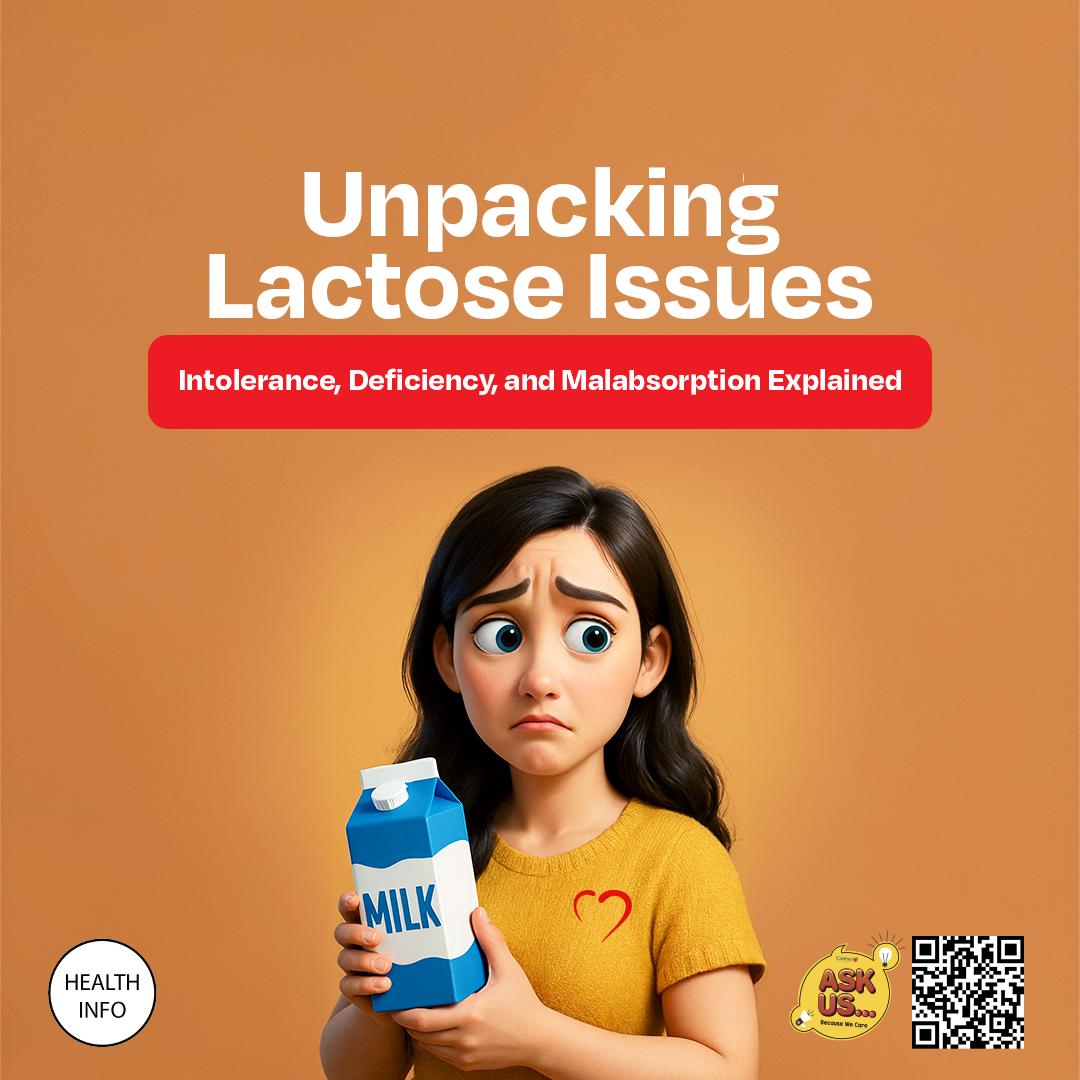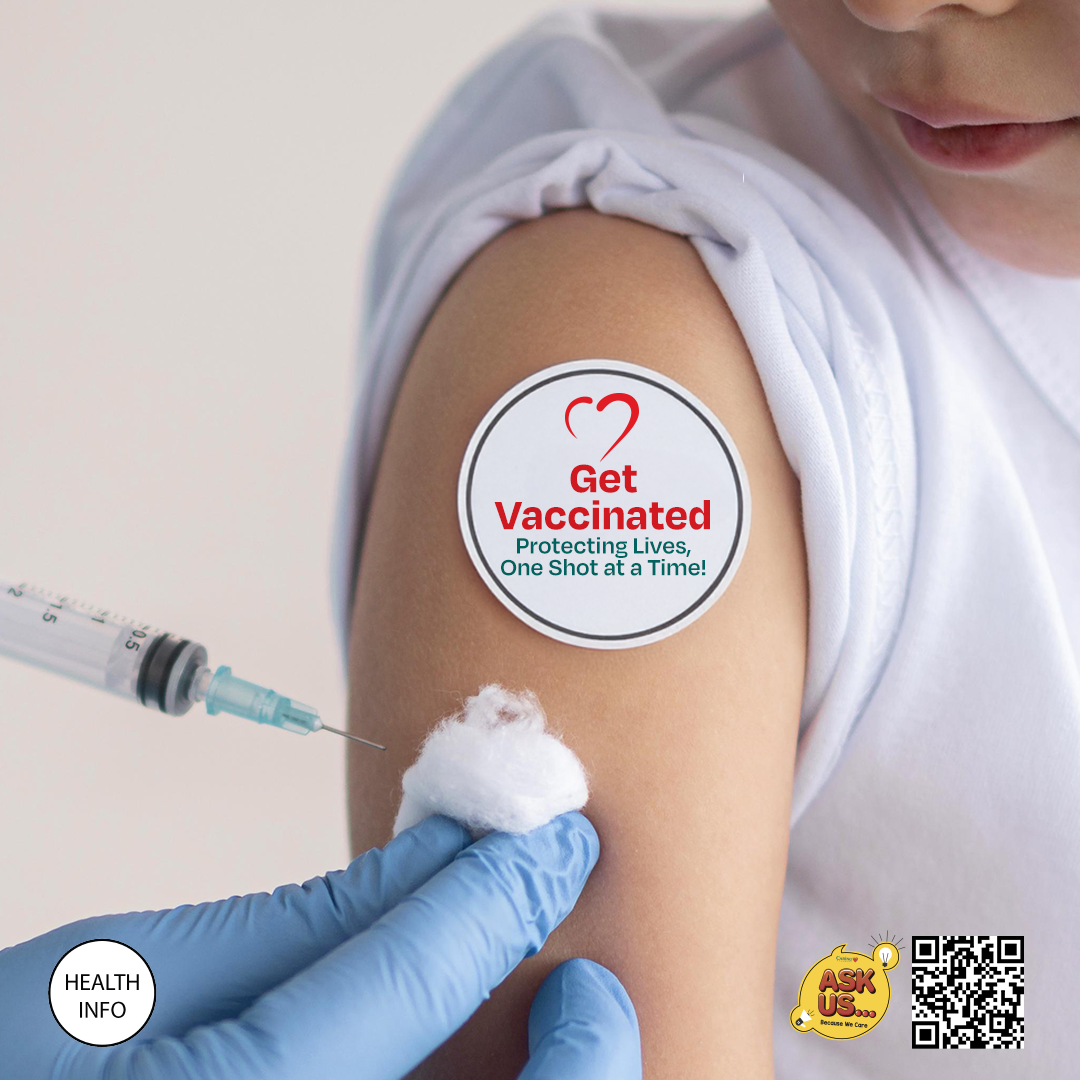- Home
- Health Center
- Health Info
- COVID-19 Vaccines: How Effective Are They?
Vaccine
COVID-19 Vaccines: How Effective Are They?

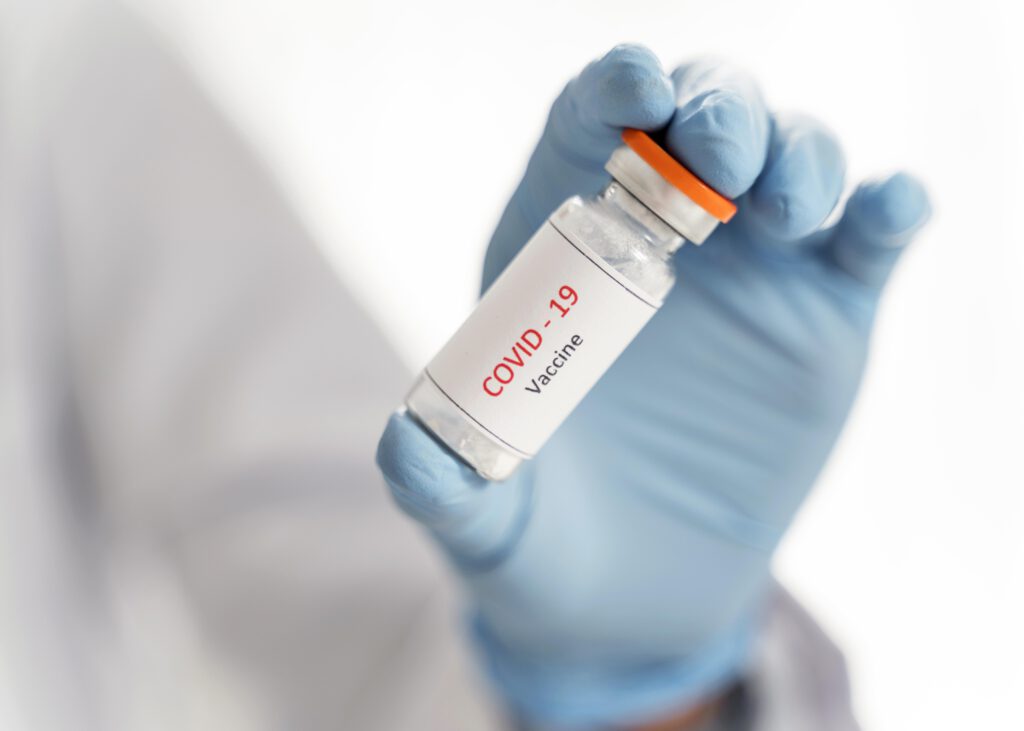
COVID-19 vaccines are biological preparations capable of stimulating the body’s immune system to recognize and build immunity against SARS-CoV-2, the virus that causes COVID -19.
There are different types of COVID-19 vaccines as shown below:
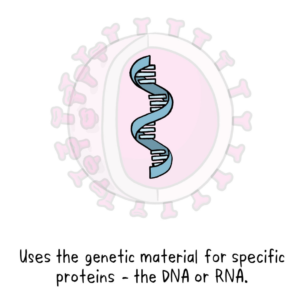
mRNA
mRNA is inserted into individual cells to produce protein directly. It acts as instructions for the cell to create “spike proteins” that are unique to SARS-CoV-2, which will trigger an immune response to produce antibodies to fight off an infection.4
These antibodies are specific to the SARS-CoV-2 virus, which means the immune system will be primed to safeguard against future infection.
It is important to note that mRNA does not enter the cell nucleus nor does it affect genetic material, hence it does not alter or modify one’s genetic makeup.
Advantages:
- Easy and fast production
- No living components involved due to synthetic production
- Triggers action adaptive immune response
Challenges:
- mRNA vaccines are a form of newly introduced vaccine for human use
- Requires stringent storage condition (-75 °C)
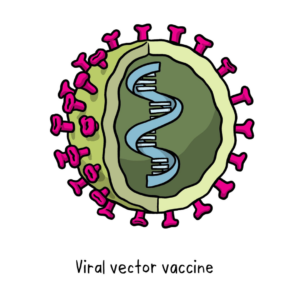
Virus Vector
It consists of a modified virus carrier (vector) which is harmless. The vector delivers genetic codes to our cells. The codes are further transcribed into mRNA which will prompt our cellular machine to produce SARS-CoV-2 spike protein.3 The protein then triggers an immune response to fight against the infections.
Advantages:
- Well-established technology
- Strong immune response
Challenge:
- Relatively complex to manufacture
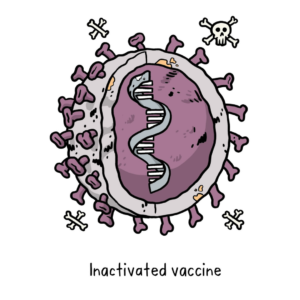
Deactivated Virus
It consists of virus particles, or pathogens that have been modified and killed by heat, radiation, or chemicals to destroy the pathogen’s genetic material. This will prevent the virus from replicating.2 The deactivated virus vaccine can then trigger a strong immune reaction.
Advantages:
- Proven and licensed technology
- Easily produced
Challenge:
- High production cost
As of February 2021, Malaysia has had access to supply of up to 66.7 million doses of COVID-19 vaccines through COVAX facility from 5 vaccine manufacturers.1
So How Effective Are They?
In short, all five vaccines have varying levels of effectiveness with Pfizer showing the highest efficacy of 95%. However, all COVID-19 vaccines have a minimum level of efficacy of 50%, which is the standard set by the US Food Drug Administration (FDA) and World Health Organisation (WHO).6
The National Pharmaceutical Regulatory Agency (NPRA) Malaysia are in the midst of scrutinizing clinical data to ensure all vaccines are safe and effective, and as of February 2021 have conditionally approved the Pfizer vaccine. 7
Despite the difference in efficacy between all five vaccines, the bottom line is for everyone to be vaccinated to better curb the disease as a whole by achieving herd immunity.
Conclusion: Let’s Achieve Herd Immunity
So, what is herd immunity, and how do we achieve it? Herd immunity occurs when a large portion of a community (the herd) becomes immune to a disease, making the spread of disease from person to person unlikely as the virus has a lower chance of contacting the susceptible. As a result, the whole community becomes protected including those who can’t be vaccinated, such as new-borns, pregnant women or those who have compromised immune systems. Hence, the key to achieve herd immunity is for the majority of the community to receive vaccination and get immunized.
Lastly, if unsure, do consult your healthcare provider for scientific and accurate information about the COVID-19 vaccines.
Stay safe and take care! #kitajagakita
References:
- Jawatankuasa Khas Jaminan Akses Bekalan Vaksin COVID-19. (2021). Program Imunasasi COVID-19 Kebangsaan. Retrieved from
https://www.Pelaksanaan Program Imunisasi COVID-19 Kebangsaan akan melibatkan pelbagai pihak yang merangkumi usaha advokasi dan khidmat sokongan serta proses vaksinasi di seluruh negara. - The different types of COVID-19 vaccines. World Health Organization (WHO). (Web accessed February 2021). Web link: https://www.who.int/news-room/feature-stories/detail/the-race-for-a-covid-19-vaccine-explained
- Understanding Viral Vector COVID-19 Vaccines. Centres for Disease Control and Prevention (CDC). (Web accessed February 2021). Web link: https://www.cdc.gov/coronavirus/2019-ncov/vaccines/different-vaccines/viralvector.html
- Vaccines & Immunizations. Centres for Disease Control and Prevention (CDC). (Web accessed February 2021). Web link: https://www.cdc.gov/vaccines/covid-19/hcp/mrna-vaccine basics.html#:~:text=Mechanism%20for%20Action,node%20near%20the%20vaccination%20site.
- Frequently Asked Questions about Vaccination. Centres for Disease Control and Prevention (CDC). (Web accessed February 2021). Web link: https://www.cdc.gov/coronavirus/2019-ncov/vaccines/faq.html
- What does Covid Vaccine Efficacy Mean? A.Cunningham. Science News. (Web accessed February 2021). Web link: https://www.sciencenews.org/article/coronavirus-what-does-covid-19-vaccine-efficacy-mean
- Pfizer-BioNTech vaccine granted conditional registration for use in Malaysia — Khairy. AC.Shankar .The Edge Markets. (Web accessed February 2021). Web link: https://www.theedgemarkets.com/article/pfizerbiontech-vaccine-given-conditional-registration-use-malaysia-%E2%80%94-khairy
Latest Health Info
Unpacking Lactose Issues: Intolerance, Deficiency, and Malabsorption Explained
Ever wonder why some people, or even yourself, are suffering from lactose intolerance? Lactose, the primary sugar in milk and ...
Detect to Protect: Why Cancer Screening Matters
Cancer is a complex group of diseases characterised by the uncontrolled growth and spread of abnormal cells in the body. ...
Get Vaccinated: Protecting Lives, One Shot at a Time
Vaccines are among the most powerful tools in medicine, saving millions of lives by preventing serious diseases. From children to ...

